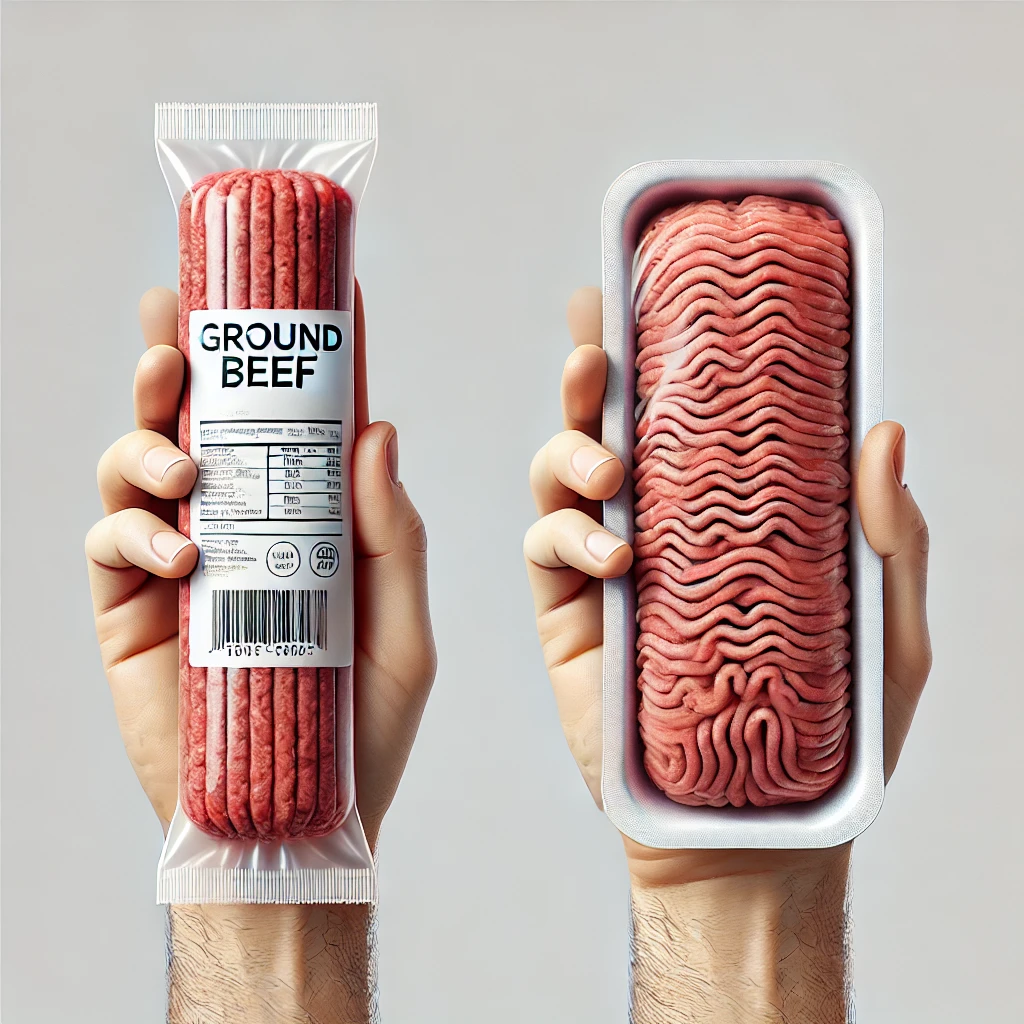Ground beef is a versatile ingredient found in households worldwide, and its packaging plays a significant role in both price and quality. Many shoppers notice that ground beef in tubes, often called “chub” packaging, is generally less expensive than the same product sold in traditional trays. This price difference usually raises questions about whether the quality of tube-packaged beef is inferior or if other factors contribute to its affordability. In this article, we’ll explore why ground beef in tubes is cheaper, its advantages, and why it might be the right choice for your kitchen.
Lower Packaging Costs
The primary reason for the cost difference lies in the packaging process. Tube packaging is simpler and more cost-effective compared to trays. Here’s why:
- Material Efficiency: Tube packaging uses less plastic than trays, which require a plastic base and a clear plastic wrap. This reduction in material usage significantly lowers production costs.
- Streamlined Process: Tubes are filled and sealed in a single step during manufacturing, while trays require additional steps, such as wrapping and labeling.
- Bulk Production: Tube packaging is often associated with high-volume production, allowing manufacturers to reduce costs further through economies of scale.
These savings are passed down to consumers, making tube-packaged ground beef affordable without compromising quality.

Extended Shelf Life
Ground beef in tubes often has a longer shelf life than tray-packaged beef due to the vacuum-sealing process used in tube packaging. This airtight seal offers several benefits:
- Minimized Air Exposure: Air is a significant factor in meat spoilage. Vacuum-sealed tubes remove air, slowing the oxidation process and extending the freshness of the product.
- Reduced Waste: Retailers benefit from reduced spoilage, allowing them to sell the product at a lower price without incurring losses.
Tube packaging preserves the product longer, ensuring that consumers get fresh beef at a lower cost, even if purchased days after production.
Cost-Effective Storage and Transportation
Another reason for the price difference is the practicality of tube packaging in terms of storage and transportation:
- Space Efficiency: Tubes are compact and cylindrical, allowing for better use of storage space in refrigerators, freezers, and transportation containers.
- Durability: Tubes are less prone to damage during shipping than trays, which can crack or leak.
- Weight Savings: Tube packaging’s reduced weight contributes to lower shipping costs, further decreasing the overall cost for retailers and consumers.
These logistical efficiencies make tube-packaged ground beef more affordable to transport and stock, ultimately lowering its retail price.
Perception vs. Reality
While tube packaging is often associated with budget-friendly options, it’s important to dispel the misconception that lower cost means lower quality. In reality, the quality of ground beef in tubes is often identical to that in trays, as both products typically come from the same suppliers. The difference lies solely in the packaging.
- Consumer Perception: Many consumers perceive tray-packaged ground beef as fresher due to its visibility. However, the vacuum-sealing process in tubes often preserves the beef better than trays, with higher air exposure.
- Marketing Influence: Tray packaging is often marketed as a premium product due to its presentation, even though the meat is of similar quality.
Understanding these nuances can help consumers make more informed decisions based on product quality rather than packaging appearances.
for more info
Environmental Benefits
Tube packaging also offers environmental advantages over traditional trays:
- Reduced Plastic Waste: The smaller amount of plastic used in tubes means less waste than trays with multiple components.
- Energy Efficiency: The simpler tube manufacturing process consumes less energy, contributing to a smaller carbon footprint.
- Sustainability Appeal: For eco-conscious shoppers, tube-packaged ground beef aligns with efforts to reduce plastic usage and environmental impact.
These benefits make tube packaging an attractive option not just for its cost but also for its sustainability.
Conclusion
Ground beef in tubes is cheaper than trays primarily due to lower packaging, storage, and transportation costs. The vacuum-sealed design offers extended freshness and reduces waste for retailers and consumers. While some may perceive tube-packaged beef as less premium due to its appearance, the reality is that it often provides equal or better quality than tray-packaged alternatives. With added environmental benefits, tube packaging is a smart choice for budget-conscious and eco-friendly consumers.



